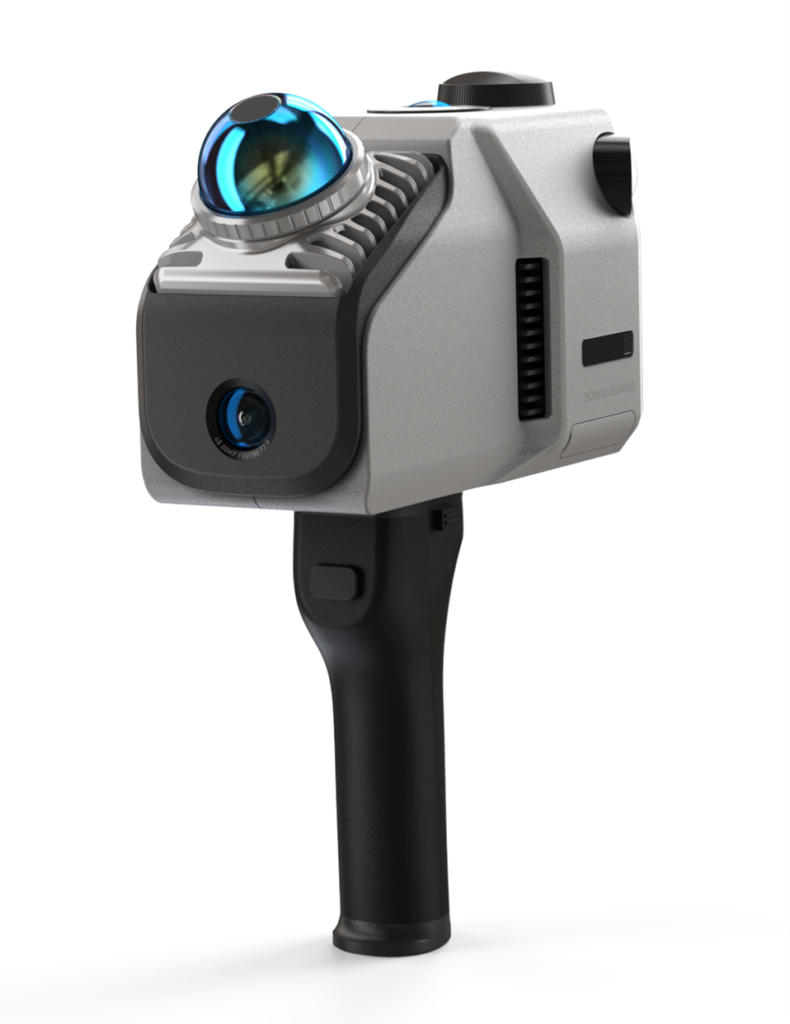Lidar scanning, up until now, has been done with devices that typically cost between $10,000 and $30,000. Top-of-the-line lidar scanners, such as Trimble’s, can cost $100,000. While lidar is known to be the most accurate of all reality capture technologies, its pricing has put it out of reach for most individuals and small businesses. Until now.

However, 3DMakerPro, a Chinese manufacturer of low-cost scanning devices, has shaken the whole lidar pricing model with its announcement that the Eagle 3D scanners are available for as little as $1,799. At the risk of sounding like an infomercial, that’s the “super early bird special” and only for the first 500 buyers. A more capable model, the Eagle Max, can be ordered for all of $2,299. Units are expected to ship in March.
You might want to order before the 25% tariff on Chinese goods kicks in.

While the 3DMakerPro leads with price, it’s no slouch with the specs. The Eagle Max has 4K resolutions and four color-sensing cameras, which color the points and make the point cloud look a little like a 3D model, albeit grainy. It offers a 2 cm accuracy at 10 meters and can scan a volume with a radius of 70 meters. It scans 360 degrees horizontally and 59 degrees vertically. The cameras can stitch together a 48MP 360-degree view and generate a gorgeous 8K HDR video.
It’s worth noting that the point cloud image generated with lidar is just a collection of points, billions of them, and therefore not quite as pretty as the camera images. Also, lidar’s storage requirements are far more demanding, with huge data files. The test of the 3DMakerPro produced a file of over half a terabyte after a scan of less than 4 minutes).
But that is common to all lidar scanners and another story. The main story here, lest we forget, is that 3DMakerPro has lowered the cost of entry into lidar scanning by an order of magnitude!
RC Schim, a YouTuber with what appears to be a costly drone habit, is given an early model of a 3DMakerPro Eagle Max. Of course, he mounts it to a drone and collects billions of points with a 3D scan while providing an expert user review. He also uses it in stationery mode.
We see the colorized points from an aerial scan using the 3DMakerPro as well as the result of points made into Gaussian splats, which, even raw, generate much more cohesive images than can colorized points. We see really nice, smooth 3D models, most likely the result of stitched-together camera views.
The handheld unit can operate for up to one hour on its battery. That is too short but long enough when you consider that a 4-minute scan is the maximum recommended, giving you enough juice for 25 scans.
Given the ridiculous amount of points generated by the 3DMakerPro, Schim recommends you don’t scan for more than 4 minutes at a time. The scan should be saved to an SD card to be read on a PC, as exporting the points takes too long.
